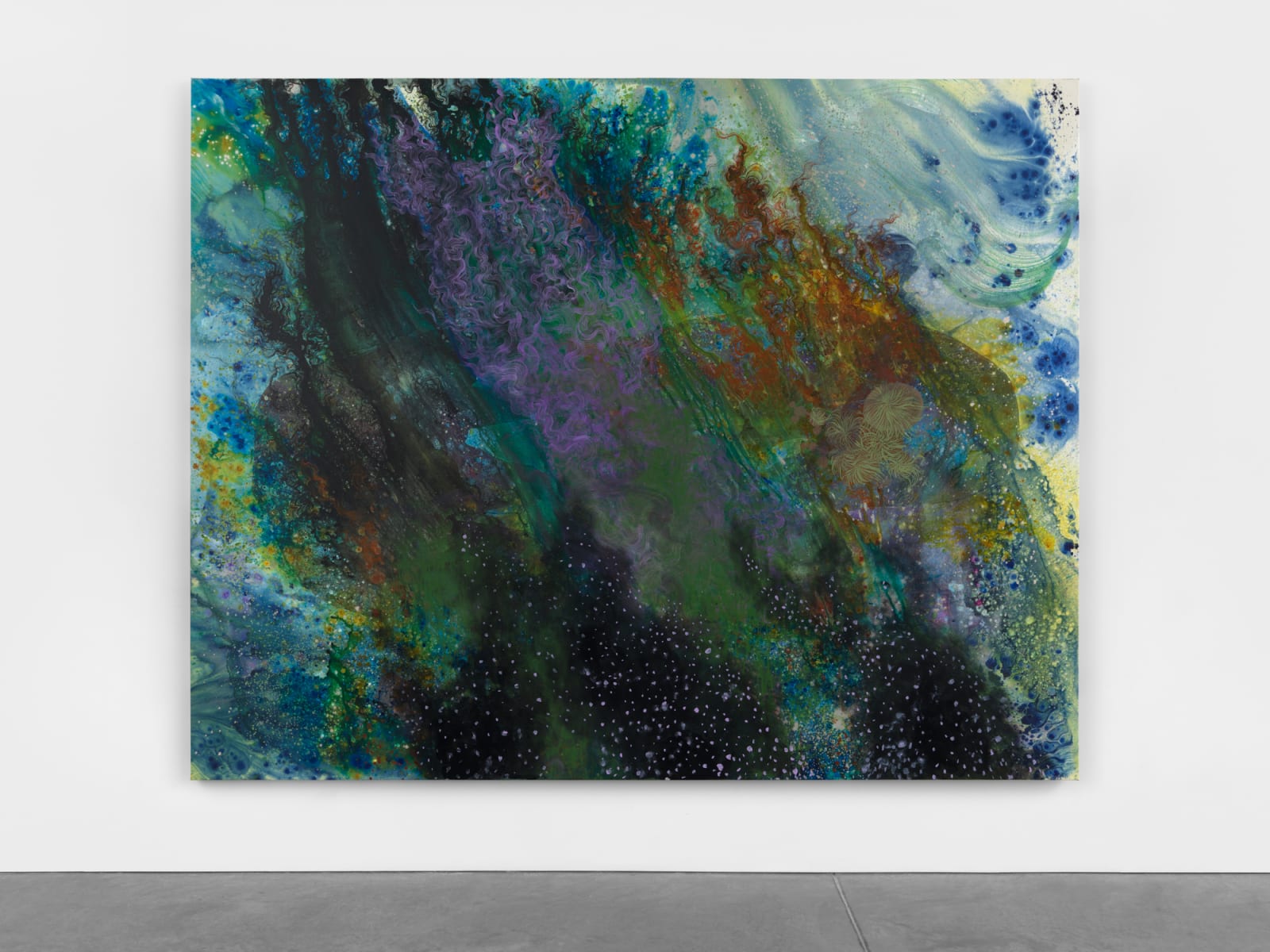-
Artworks
 Photograph: Phoebe d'Heurle.
Photograph: Phoebe d'Heurle.
 Photograph: Phoebe d'Heurle.
Photograph: Phoebe d'Heurle.
 Photograph: Phoebe d'Heurle.
Photograph: Phoebe d'Heurle.
 Photograph: Phoebe d'Heurle.
Photograph: Phoebe d'Heurle.
 Photograph: Phoebe d'Heurle.
Photograph: Phoebe d'Heurle.
 Photograph: Phoebe d'Heurle.
Photograph: Phoebe d'Heurle.
Untitled (Drexciya), 2020
Oil and acrylic on canvas90 x 114 3/4 in
228.6 x 291.5 cmSoldFurther images
For Báez, painting becomes a means of giving form to memory, evincing the idea that presence is not negated by passing. Many of her works tap into oceanic imagery to...For Báez, painting becomes a means of giving form to memory, evincing the idea that presence is not negated by passing. Many of her works tap into oceanic imagery to suggest the broader history of black diaspora and the Middle Passage, in relationship to Glissant’s theory of the ocean as a connector and a repository of physical memory. This particular painting is a response to the nautical afrofuturist mythology developed by Drexciya, a Detroit-based electronic music duo. In the 1990’s, sleeve notes accompanying their techno albums described an underwater nation called Drexciya populated by a new generation of water-breathing humans: the unborn children of pregnant African women who were thrown off of slave ships and had adapted to breathe fluid within their mothers’ wombs. Here, Báez explands upon Drexciya’s counter-narrative with rich layers of abstract gesture—along with subtle hints of figuration—opening up the inherited story of the transaltlantic slave trade to new interpretations and generative possibilities.Exhibitions
Cleveland Museum of Art - Picturing Motherhood Now: Images for a New Era, on view from October 16, 2021 to March 13, 2022
James Cohan Tribeca, Firelei Báez, March 8 - April 25, 2020
Firelei Báez: Trust Memory Over History, Louisiana Museum of Modern Art, Denmark, October 5, 2023 - February 18, 2024Literature
Liebert, Emily and Rivera Fellah, Nadiah, Picturing Motherhood Now, New Haven and London: Yale University Press, 2021.
Publications
Golden, T., Respini, E., Godfrey, M., Acevedo-Yates, C., & Russell, L. (2022). Firelei Báez: To breathe full and free (D. Norr, Ed.). New York, NY: Gregory R. Miller &., pp. 62-63.











